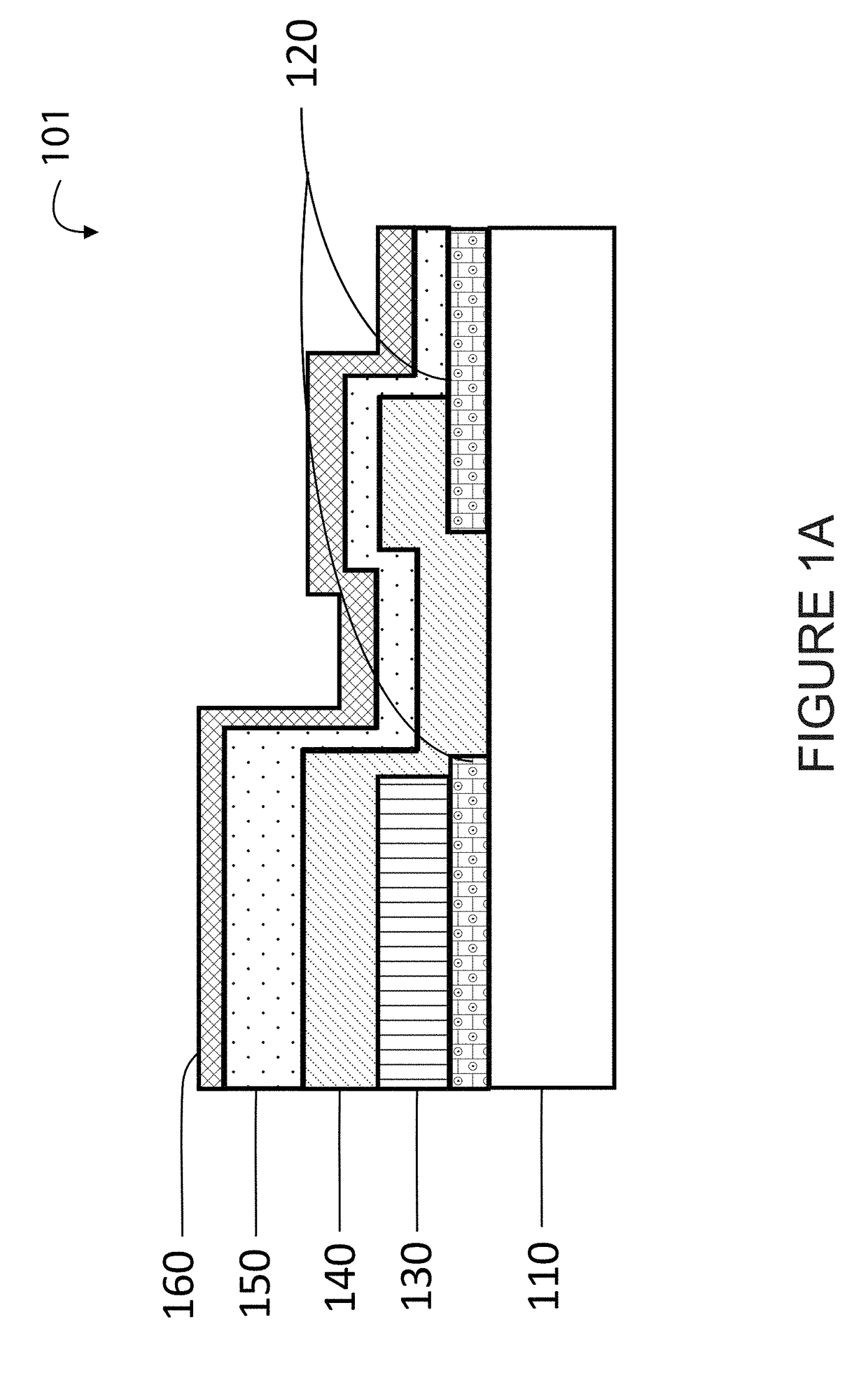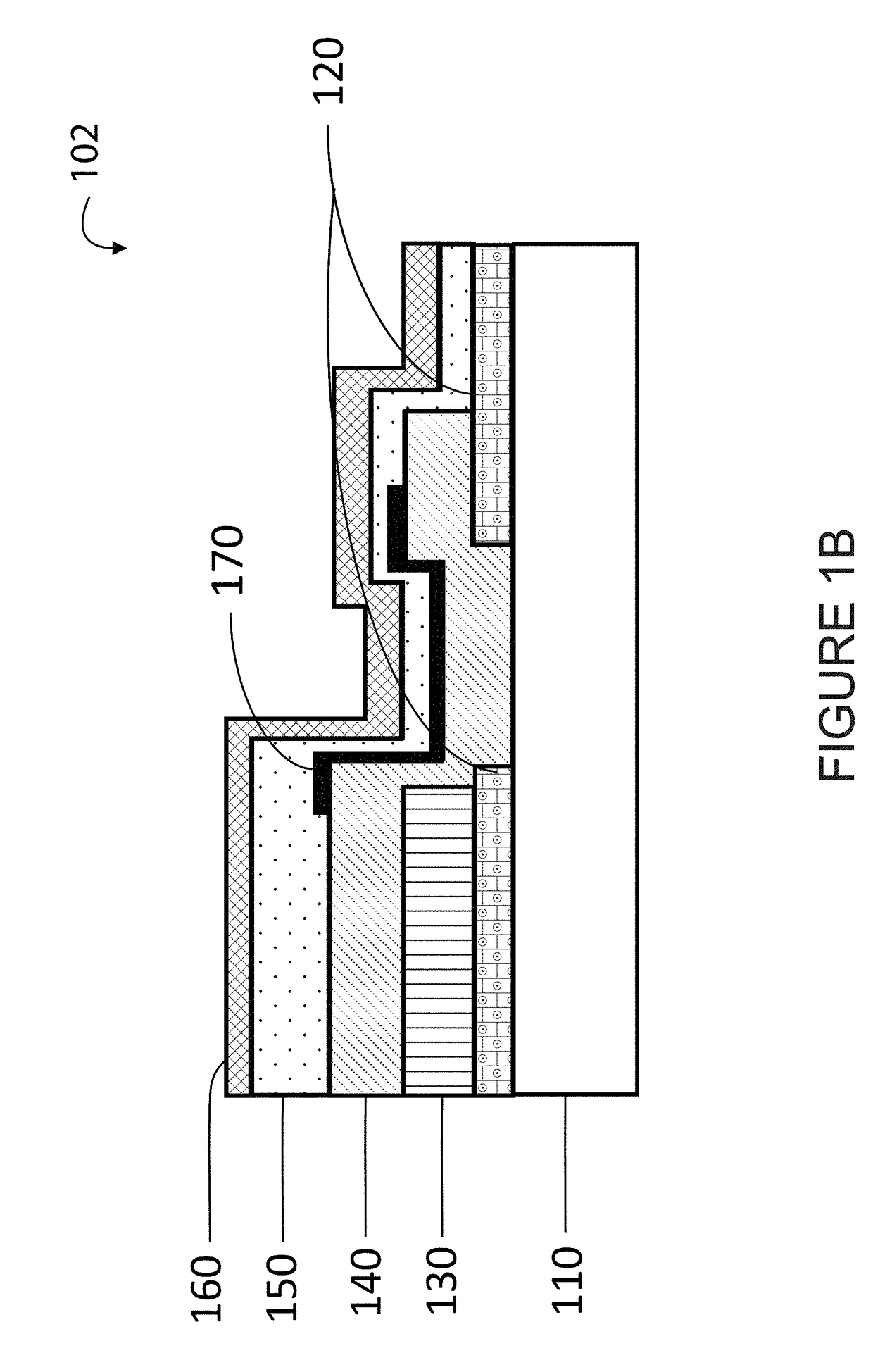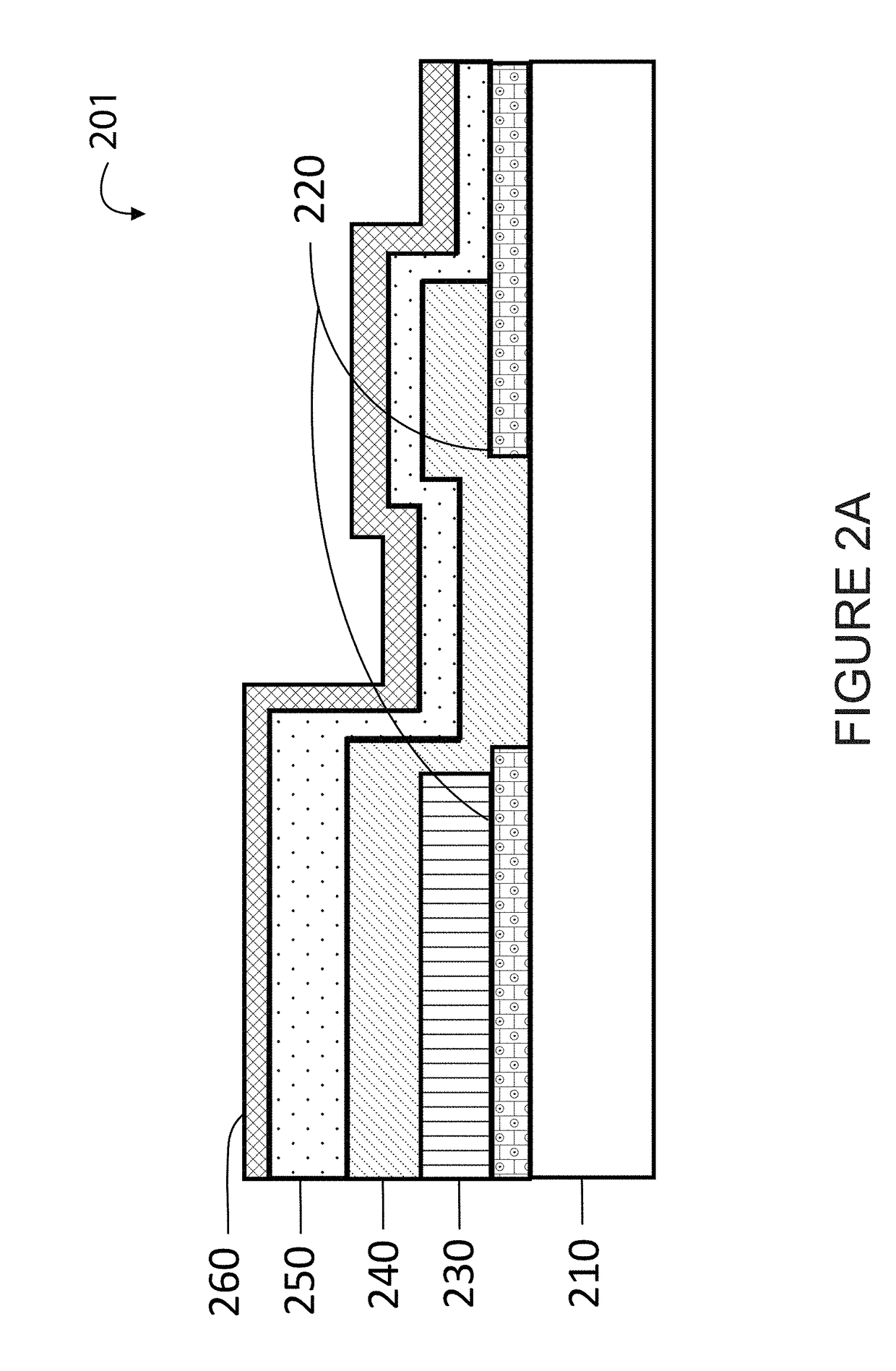Multiple active and inter layers in a solid-state device
a solid-state device and active layer technology, applied in electrochemical generators, fuel cells, electrical apparatus, etc., can solve the problems of high contact resistance, fatigue or mechanical failure, and achieve the effects of reducing fabrication time, preventing dendrite growth and shortening, and reducing ionic diffusivity
- Summary
- Abstract
- Description
- Claims
- Application Information
AI Technical Summary
Benefits of technology
Problems solved by technology
Method used
Image
Examples
example 1
[0067]This example demonstrates the effect of a diffusion barrier interlayer within a thin film electrochemical system, which includes a substrate 110, a current collector 120, a cathode 130, an electrolyte 140, an anode 150, and an encapsulation layer 160 (shown in FIGS. 1A and 1B). FIG. 1A is a simplified cross-sectional view of thin film electrochemical energy storage cell according to an embodiment of present invention. FIG. 1A illustrates simplified cross-sectional views of electrochemical cell, 101, near the “bridge” region between cathode active area and anode current collector, where the lithium ion from anode is diffused through and forming the conductive pathway perpendicular to the substrate, across the anode and the anode current collector.
[0068]FIG. 1B is a simplified cross-sectional view of a modified thin film electrochemical cell, 102, with an additional diffusion barrier layer over the bridge region between the electrolyte and the anode layers according to an embodi...
example 2
[0079]When thin film electrochemical cells are stacked together, a set of electrochemical cells should be connected or isolated to form serial or parallel connections to establish desired voltages or capacities for a specific application. In this example, three lithium batteries are stacked to form three cells in parallel with an electrically isolating interlayer between stacks. Material types such as ceramics or polymers can be used as an isolating interlayer for stacked electrochemical cells with parallel connections. This example compares the effect of planarization of these two material types.
[0080]FIG. 5A is a scanning electron microscope graph of three stacks of thin film electrochemical energy storage cells without the interlayers and their cell voltages according to an embodiment of the present invention. In FIG. 5A, the voids under each interlayer is where a lithium layer exists. The wavy contour of the interlayer indicates that the top surface of the lithium was not flat. ...
example 3
[0083]As an example encountered by the battery designer, the value of intrinsic stresses distribution for a stacked electrochemical cells setup is unknown. Selection of the proper intermediate layer between layer 1 and layer 2 to reduce the stress is critical to construct a long cycle life battery. This example illustrates the effect of intermediate layer's modulus on stress distribution of stacked electrochemical cells by computer simulation.
[0084]FIG. 7 is a schematic drawing, specs and material properties of two thin film layers sandwiched an intermediate layer according to an embodiment of the present invention. The stacked electrochemical cells setup used in this example is composed of partially completed electrochemical cells, layer 1 and layer 2, as shown in FIG. 7. Modulus contrast ratio of the two layers, E2 / E1, is 10. Assuming there is an initial strain of 10% of e2 in layer 2.
[0085]FIG. 8 lists four different kinds of moduli of intermediate layer used in the simulation to...
PUM
| Property | Measurement | Unit |
|---|---|---|
| thickness | aaaaa | aaaaa |
| thickness | aaaaa | aaaaa |
| total thickness | aaaaa | aaaaa |
Abstract
Description
Claims
Application Information
 Login to View More
Login to View More - R&D
- Intellectual Property
- Life Sciences
- Materials
- Tech Scout
- Unparalleled Data Quality
- Higher Quality Content
- 60% Fewer Hallucinations
Browse by: Latest US Patents, China's latest patents, Technical Efficacy Thesaurus, Application Domain, Technology Topic, Popular Technical Reports.
© 2025 PatSnap. All rights reserved.Legal|Privacy policy|Modern Slavery Act Transparency Statement|Sitemap|About US| Contact US: help@patsnap.com



